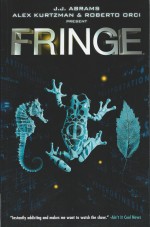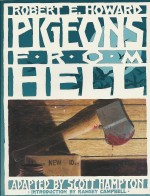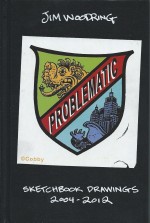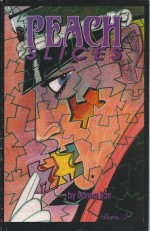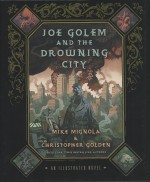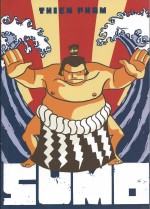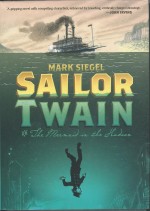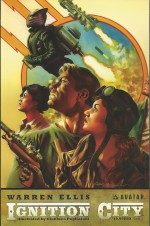
By Warren Ellis, Gianluca Pagliarani & Chris Dreier (Avatar Press)
ISBN: 978-1-59291-087-8
We don’t do clear, wide-eyed optimistic science fiction space opera any more. We’re all much more cynical, defensively sardonic and glumly disappointed: betrayed by the bland Future we inherited rather than the gleaming, enticingly simplistic one we were promised. It’s the 21st century, I still haven’t got my jet-pack and I’m not going to shut up until I get one…
Nevertheless the iconic heroes and villains invented for those now near-extinct Cold-War 20th century tomorrow people still provide the raw material for gripping, evocative post-modern futurist fodder and a few comics creators are truly proficient in blending that cheated Sense of Wonder with modern sensibilities to make whole new science fiction sensations.
One of the better recent modern myth-busting mini masterpieces was a 5-part miniseries from 2010: brainchild of acerbic wunderkind Warren Ellis, whose clear love of all things Wild, Black and Yonder have previously resulted in such superb speculative thrillers as Transmetropolitan, Ministry of Space and Aetheric Mechanics (this last also illustrated by Gianluca Pagliarani, the superbly effective co-creator of the particular space romp under the lens here).
The tale itself is an old and familiar one, but the setting is truly what gives this dark yarn its shockingly addictive appeal. On this Atompunk/Dieselpunk Earth, World War II was cut short when Martians invaded, prompting a couple of explosive decades when square-jawed, burly humans rode rockets to the stars and battled horrendous dictators such as Kharg the Killer, brutal despot of a fantastic alien empire who picked the wrong side when he allied himself with Adolf Hitler…
Now it’s 1956 and the lustre has tarnished for most Terrans regarding space.
With Cold War politics, economic woes and the fear of alien contamination – physical, cultural and social – the planet has turned against space and spacers.
There is only one place on Earth where ships even exist any more – the self-contained enclave island of Ignition City – where all those veteran astronauts grimly await the day when all off-world travel is finally banned.
For young Mary, daughter of interplanetary legend Arthur “Rock†Raven, it’s a cruel fate. Like so many who have been to infinity and beyond, she is addicted to the wonders of the void and the prospect of a life imprisoned on one world is unbearable.
When she gets notification that her dad has died in the interzone settlement ofIgnitionCityshe decides to go there and recover his personal effects – despite strenuous resistance from assorted governments, various Powers-that-be, close friends and her own mother. She has no illusions about her dad or the spacer’s life, but it’s what she wants and she’ll chase any remote chance to hold onto it. Ignoring all that pressure Mary consequently discovers that, as always, nothing is as it seems.
The artificial island is an anarchic hellhole. Draconian military outposts around the coast enclose and isolate a derelict, ramshackle and squalid shanty town of broken beings and beasts from a dozen worlds, eking out an existence amongst the ruins of ships and exotic cosmic technological debris. Everybody seems to be simultaneously waiting for one last chance to get off-world or just die and fade away.
Passing through immigration she first learns how the City is deadly dangerous and that corruption is a way of life as the civil servants confiscate her gun…
In the star-sucking slums, legends of her youth are growing old disgracefully and gradually dying. Saviour of the Universe Lightning Bowman has become the settlement’s chief gunrunner and his once-beloved Gayle Ransom runs a local bar: both eking out a living catering to the daily needs of an army of disillusioned spacers, and aliens trapped by the tide of the times. Their old comrade Doc Vukovic is a crazy hermit now: spending his days prowling the huge junkyards, cobbling together a ship to take him away from the hell of his home world. Violent death is a daily occurrence and only frowned upon because it generates unwelcome paperwork for corrupt Port Authority officials like the jetpack-riding Marshal Pomeroy.
Checking in to the boarding house where her dad died, Mary goes looking for answers and discovers Rock Raven was murdered in his bed. Inspired by discovering the “Howâ€, her efforts to obtain a weapon don’t go as easily, but she’s still determined to stick around and find the “Why†and the “Whoâ€â€¦
Even greedy, paranoid, far-fallen from grace Cosmic Champion Bowman won’t sell her a weapon. He only urges her to get the hell out of the doomed city…
Sticking around and poking her nose in all the wrong places, Mary makes a few unlikely friends but no progress until she reclaims her father’s impervious old briefcase. Deftly manipulating a lock which a lot of people have clearly tried to breach, Mary finds the murdered spacer’s journal – and his fully-charged, highly illegal, honking great, souped-up ray-gun… just the kind of thing specifically prohibited by the authorities.
Now, she thinks, some answers are going to be forthcoming…
Soon, amidst a storm of blood and lethal radiations, she has uncovered why her father died, a sordid government conspiracy involving Humanity’s greatest foe and, with fallen arch-scientist Dragomir Vukovic (builder of the first rocket-ship in history), united the self-loathing, lost and ragged remnants of the Earth’s greatest – and only – star-panning generation to expose the greatest shame of the world which turned its back on the future…
In case you’re dense or just young, this epic space-western classily references, dismantles and reassembles all those glorious heroic archetypes and wonder-men of the pulp science fiction era (complete with cunning conceptual name checks for the iconic characters old farts like me grew up adoring: from the obvious Buck Rogers and Flash Gordon to King of the Rocketmen, the Lensmen, Dan Dare and the rest) in a sharp, bleakly nihilistic tale beautifully rendered and crisply told, that still manages to enflame the frustrated simmering dreams in all of us doddery dreamers cheated out of the stars by shoddy tawdry reality…
Harsh, uncompromising and turbulently trenchant, this overwhelmingly entertaining tome also includes a host of design sheets, covers, variants and pin-up pages in a glorious Gallery section to cap off a powerful paean of praise to forgotten tomorrows which long-time sci-fi fans, comic readers and newcomers alike will adore.
© 2010 Avatar Press, Inc. Ignition City and all properties ™ & © 2010 Warren Ellis.

